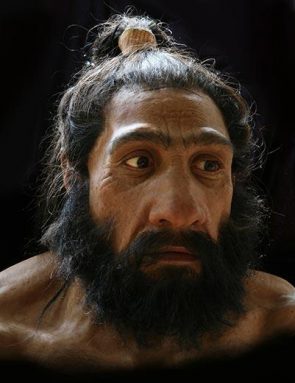Volcanic doom for Neandertals
Eruptions may have helped set the stage for modern humans
Scientists aren’t sure what caused the extinction of the Neandertals. It’s the ancient species most closely related to modern human beings. It might have been something about their diet. Or they might have been doomed by a changing climate. They might even have been outsmarted by modern humans.
Or, volcanoes may have helped wiped them out. That’s the new conclusion of a team of Russian archaeologists.

It contains layers of sediment, which are bits of rock and other materials that settled there over time. Scientists can determine how old each layer is. That will also give the age of anything found within each layer (such as bones). For this study, the scientists looked at layers that are 40,000 to 45,000 years old. These contained ash from two separate volcanic eruptions.
“For the first time, we have identified evidence that the disappearance of Neandertals in the Caucasus coincides with a volcanic eruption approximately 40,000 years ago,” Golovanova told Science News.
More than 10,000 artifacts, as well as other objects, have been taken from the cave and studied by scientists. (An artifact is something thought to have been made by humans or — in this case — by Neandertals.) Archaeologists have found the bones of hunted animals, stone tools used by Neandertals and even the skeleton of a Neandertal infant. Most of the cave’s Neandertal artifacts are at least 40,000 years old.
Other scientists recently found evidence of another eruption from the same time — but in Italy. That enormous volcanic blast probably affected where Neandertals liveds in southern and eastern Europe.
Golovanova’s team combined the new information with older data. They knew that Neandertals disappeared from the area about 40,000 years ago. The new evidence suggests that these three volcanoes erupted shortly before that time. The volcanic blasts helped wiped out the local Neandertal population, the researchers now believe. The Neandertals probably didn’t die all at once. But the eruptions could have made it impossible to live any longer in that area.
Modern human beings, Homo sapiens, were spared from the destructive volcanoes. Back 40,000 years ago they lived in Africa and in parts of Asia that were unaffected. However, soon after the eruptions, Homo sapiens moved into the area formerly occupied by the Neandertals, including the cave. Archaeologists have found artifacts there from modern humans dating back 37,000 years.
Golovanova and his colleagues believe that the Neandertals were long gone from the cave before modern humans showed up. But some scientists disagree. Biagio Giaccio is a geologist at the Institute of Environmental Geology and Geoengineering in Rome, Italy. He says that more work is needed to understand who was where, and when.







